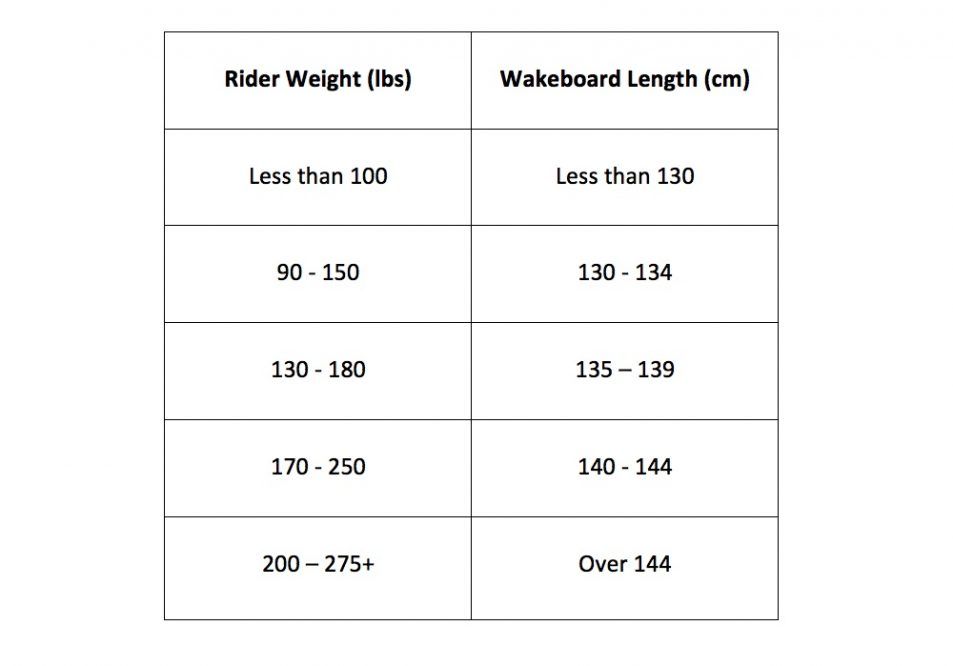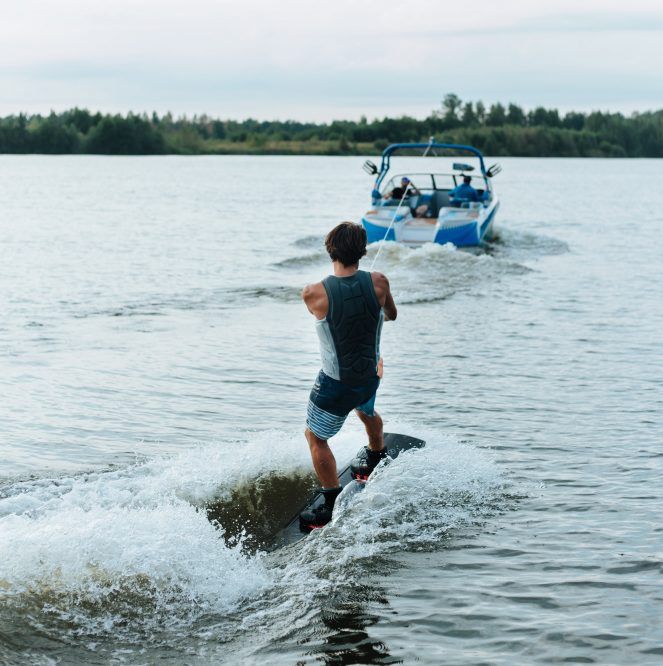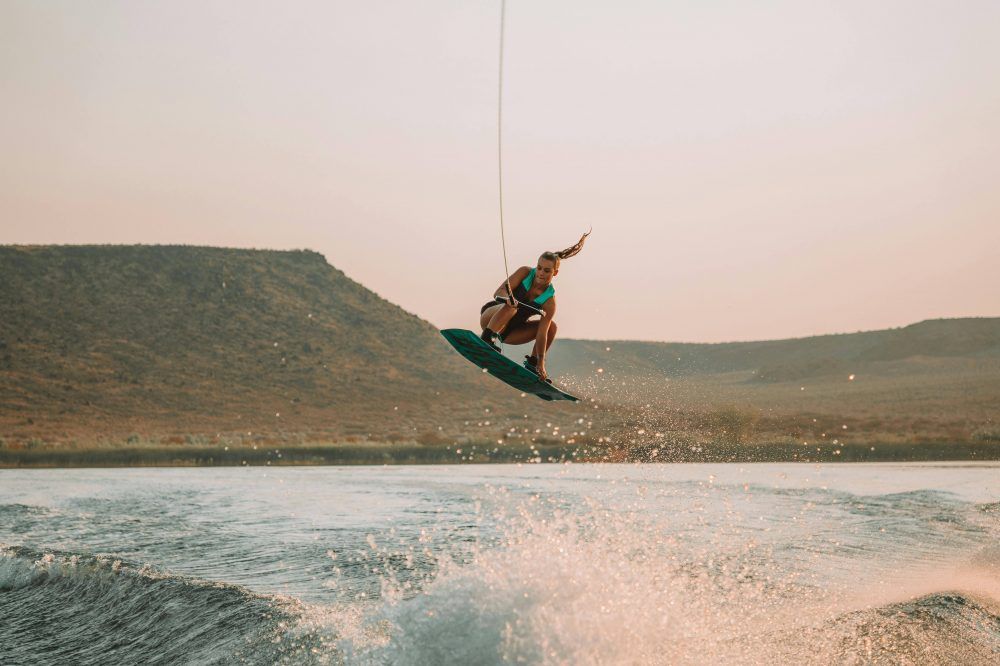Wakeboarding for Beginners
This guide offers essential tips and instructions to help you confidently master the basics of wakeboarding.
October 30, 2024
Wakeboarding is an exhilarating watersport that combines elements of surfing, snowboarding, and water skiing. For those new to the sport, the idea of learning can be both exciting and daunting. With the right equipment, techniques, and guidance, beginners can quickly get the hang of wakeboarding and enjoy the thrill of gliding across the water. This guide will provide you with essential tips instructions to help you master the basics and start your wakeboarding journey with confidence.
Overview
To get started with wakeboarding, beginners should focus on mastering their stance and balance while being gently pulled up by the boat to find a stable riding position on the water. Once riders feel comfortable standing, they should practice edging by shifting their weight onto their heels or toes, allowing them to control direction and carve smoothly across the wake. After mastering this aspect, the goal for most wake boarders is to learn how to jump the wake and perform basic aerial tricks, which adds excitement and progression to their rides.
Difference Between Wakeboarding & Wake Surfing
It is important to pause for a moment to note the difference between wakeboarding and wake surfing. Both are popular water sports but they differ in technique, equipment and experience. In wakeboarding, riders are attached to a board with bindings and hold onto a tow rope connected to the boat, which pulls them at higher speeds, allowing for tricks, jumps, and aerial maneuvers over the boat's wake. Wake surfing, on the other hand, involves a rider standing on a shorter, finned board similar to a surfboard and surfing the wave created by the boat without holding onto the tow rope. Once the wave is established, wake surfers drop the rope and ride the boat's wake as they would a natural ocean wave, creating a more relaxed and flowing experience. So before you continue with your wakeboarding journey, make sure you've chosen the right sport for your style and preferences.
Getting Up on the Board
First thing's first, as a rider, you'll want to decide your stance: regular or goofy. Regular means leading with your left foot, while goofy means leading with your right. If you’ve skated or snowboarded before, your stance may already be clear, though some people switch between sports. Another method is to notice which foot you use first when stepping up a staircase—this is often your back foot for wakeboarding.
After deciding your stance, arrange your wakeboard bindings shoulder-width apart or wider. Angle them slightly outward to establish a sturdy position.
Keep your arms straight and knees bent, letting the board naturally move beneath you until your body is positioned above it. Allow the boat to pull you up rather than trying to force yourself out of the water. As a beginner, you might be tempted to straighten your legs, but this will put you out of position. Instead, stay in a crouched position until you are fully over the top of your wakeboard.
Move slowly to minimize the risk of falling. Once you're up, gradually rotate your dominant foot to the back to begin wakeboarding.
Essential Gear
Similar to other watersports, you’ll need four essentials: life jacket, a tow rope, a boat, and, naturally, a wakeboard.
Any standard life vest will work just fine, though we recommend those approved by the U.S. Coast Guard. Many professional riders prefer neoprene vests because, despite their higher cost, they offer superior comfort and fit.
A quality non-stretch tow rope is best, ideally 55-75 feet long. Erring on the shorter side of that range will make the ride easier for new wakeboarders, as the rope will be less likely to move around and throw off your balance. Adjustable loops are useful here also, as they allow you to customize the rope length to suit your boat's wake and your riding style.
While you can wakeboard behind nearly any type of boat, the ideal boat is a wakeboard boat or wake-specific boat, designed to create consistent wakes that are perfect for jumps and tricks. These boats are equipped with inboard engines, and their hulls are shaped to produce bigger wakes. Ski and sport boats with indoor motors also work well as they are able to create smoother, predictable wakes essential for stability and control when riding.
To find the right wakeboard size, you'll want to consider your weight and riding style. While shorter boards are optimal for maneuverability and tricks, if you're a beginner, you're better off with a slightly longer board for increased stability. Generally, wakeboard sizing charts are based on weight ranges to help you find the most stable option. Here’s a quick guide:

The Driver's Role
When wakeboarding, effective communication with the boat driver is essential for safety and an enjoyable ride. Here are some common hand signals to help you communicate from the water:
- Speed Up: Thumbs up.
- Slow Down: Thumbs down.
- Stop: Draw your hand across your neck, like a "cut" signal.
- Turn Around: Point your finger in a circular motion.
- Return to Dock/End Ride: Pat your head with an open hand.
Make sure to review these signals with the driver before starting, and maintain eye contact as much as possible to ensure they understand any adjustments you need.
When starting your ride, the driver should ease into the throttle gently. Unlike traditional water skis, wakeboards have a larger surface area, making them easier to plane.
Maintain a boat speed between 18 and 21 mph, adjusting based on the rider's experience and comfort. You can also appoint a passenger to act as a spotter, signaling when the rider falls or requests a speed change. Consistency is key. Keep the throttle steady and drive in straight lines to provide the rider with the best possible pull.

Above: man wakeboarding with boat. Photo by Pexels.
Future Tricks to Try
Later on, when you’ve become comfortable with the basics of wakeboarding, you can try some of these tricks:
- Jumping the wake: This means using the wave created by the boat as a ramp to get airborne. To jump, bend your knees and push off just as you reach the peak of the wake for lift.
- Spinning: To spin, rotate your body mid-air—usually 180 or 360 degrees—by turning your shoulders in the desired direction before takeoff, keeping a steady grip to stay balanced.
- Flipping: Flipping involves going head-over-heels by tucking your body and controlling the rotation in the air, which requires timing and a strong handle grip to guide your movement and stay stable.
Each of these adds a new level of challenge but also ups the thrill as you master them. In the meantime, the trick you can learn to prepare for these more advanced moves is carving. Carving means smoothly edging back and forth across the water, using your body weight to steer the board in an S-shaped pattern. It helps you build balance, control, and familiarity with shifting your weight—skills that are essential for jumps, spins, and flips later on. Plus, carving can be really fun on its own, giving you a feel for the board’s movement and flow.

Above: Woman performing wakeboard trick. Photo by Pexels.
Remember, falling is just part of the process when learning wakeboarding tricks. But if you follow these tips, you'll fall less, learn faster, and have way more fun along the way.












